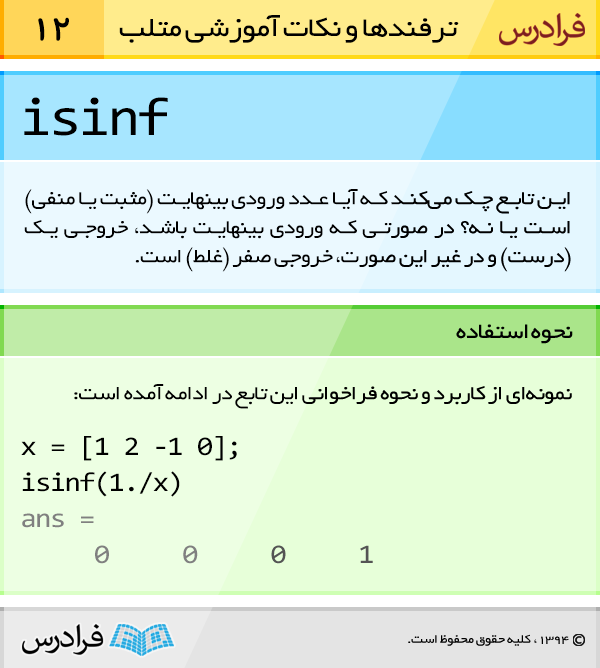راهنمای استفاده از تابع isinf در متلب

تابع isinf چک میکند که آیا عدد ورودی بینهایت (مثبت یا منفی) است یا نه؟ در صورتی که ورودی بینهایت باشد، خروجی یک (درست) و در غیر این صورت، خروجی صفر (غلط) است.
برای مشاهده نحوه استفاده، لطفا به ادامه مطلب مراجعه نمایید.

تابع isinf چک میکند که آیا عدد ورودی بینهایت (مثبت یا منفی) است یا نه؟ در صورتی که ورودی بینهایت باشد، خروجی یک (درست) و در غیر این صورت، خروجی صفر (غلط) است.
نحوه استفاده:
نمونه ای از کاربرد و نحوه فراخوانی این تابع در ادامه آمده است:
x = [1 2 -1 0];
isinf(1./x)
ans =
۰ ۰ ۰ ۱
مطالب پیشنهادی
مجموعه: اخبار و تازه ها, برنامه نویسی, برنامه نویسی متلب برچسب ها: آموزش متلب, برنامه نویسی متلب, ترفندهای متلب, متلب به زبان ساده, نکات آموزش متلب




 (No Ratings Yet)
(No Ratings Yet)